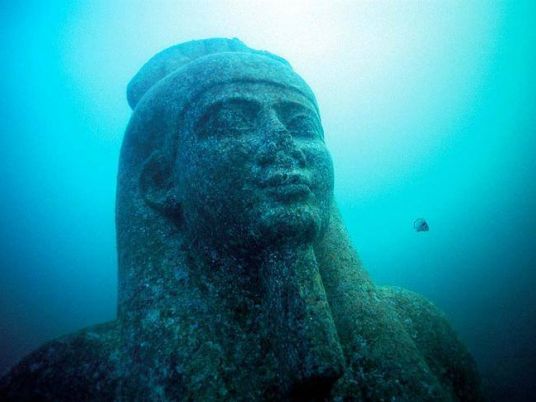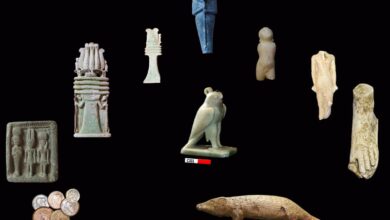
Twenty-five scientists and archeologists from more than 11 countries gathered in Egypt's second city this week for the Alexandria International Conference on Maritime and Underwater Archaeology, which ran from October 31 to November 2.
The experts descended on the coastal city for discussions on a wide range of underwater archaeology issues, as well as celebrations for the 20th anniversary of the Department of Underwater Antiquities.
Taking place in the Bibliotheca Alexandrina, the event was overseen by the Egyptian Ministry of Antiquities, in collaboration with several international partners. Chief among them were the European Institute of Underwater Archaeology, led by famous French archeologist Frank Guido, and the Center for Alexandrian Studies, led by the French archeologist Marie Dominique Nina.
The 25 archeologists came from France, Italy, Poland, Japan, Russia, Greece, the United States and several other countries.

The conference saw the presentation of the findings of the latest underwater archaeological discoveries, discussing several areas of interest, including archaeological ports, ancient shipbuilding and underwater archaeological sites in Egypt.
A topic of great interest to participants was ship-building from Pharaonic times to the Islamic era, evidence of which has been discovered along the coasts of the Mediterranean, the Red Sea and the River Nile.
Reda Farahat, governor of Alexandria, said that the Department of Underwater Antiquities contributed to the discovery of a wealth of archaeological features in the eastern port and other areas, demonstrating the city's glory. He expressed his hope that the conference would act as a lighthouse for further progress in Alexandria and underwater archeology in general.
Meanwhile, Ismail Serag al-Din, manager of the Alexandria Library, said that the conference is the fruit of 20 years of hard work and important excavations on Egypt's underwater antiquities.
Serag said the third day of the conference was focused mainly on research on Egyptian ports, including those that have already been discovered.
“The conference represents the revival of a large part of the Egyptian civilization, buried under the waters of the Mediterranean, including the statue of Ptolemy IV, which was lifted recently from the water,” he said.
In 2010, an Egyptian archaeological mission found a headless granite statue, likely to be of King Ptolemy IV, who ruled the country between 222 and 205 BC. It was discovered on the coast to the west of Alexandria.
The conference also paid respects to several key figures, including Prince Omar Toson, a descendent of the Muhammed Ali dynasty, born in 1872. As an early member of the The Royal Antiquities Association in Alexandria, the prince assisted with the funding of early underwater archaeological explorations. Also honored were Kamel Abu Saadat, a professional diver and lover of archeology, the archaeologist Ounor Frost, and Dr Ibrahim Darwish.
The first underwater discovery was made in 1933 in the Gulf of Abu Qir, east Alexandria, when a pilot told Prince Toson that he had found antiquities beneath the water. Toson financed the process of excavation and salvage of a granite head of Alexander the Great, which is currently preserved in the Roman Museum in Alexandria.
In the 1960s Kamel Abu al-Saadat created two maps showing underwater antiquities and helped in the salvage process. Then in 1980, the French Navy worked with the Antiquities Authority to lift the wreckage of Napoleon’s Navy from the sea-bed of the Mediterranean.
In 1992, the European Institute of Underwater Archaeology conducted the first complete survey of the archaeological heritage of the eastern harbor, with archaologists flocking from various nations to take part.
Two decades later, in 2002, the French archaeologist Frank Guido discovered the submerged ancient city of Thonis-Heracleion lying 6.5 km off today’s coastline, a dept of 150 feet. Thonis-Heracleion was was the main trading port for Egypt before the 4th century BC.




